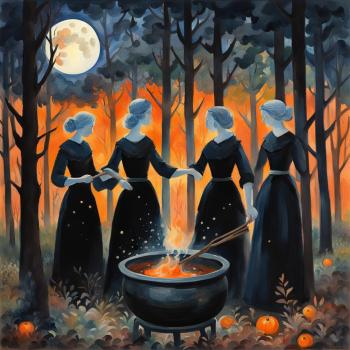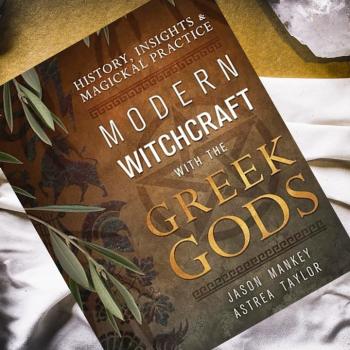 Greetings, and good Samhain! Welcome back to Wyrd Words. Keeping the Thor in Thursdays, every other week here on Agora!
Greetings, and good Samhain! Welcome back to Wyrd Words. Keeping the Thor in Thursdays, every other week here on Agora!
It’s that time of year again! The stores are flooded with more kinds of candy than you can possibly name, the media is suddenly inundated with stories of witchcraft, and, in parts of the northern hemisphere that AREN’T the American southwest, it looks like Autumn!

This is also the time of year when a lot of people make the effort to be “Extra” Pagan. Members of a dozen different communities, with two dozen different names for the autumn festivities, all come together to celebrate.
Even reclusive solitaries (like yours truly) occasionally emerge from behind their book castles to interact with the local varieties of Pagandom. It’s a time of year where we all seem to momentarily care a little bit less about the differences between our traditions, and a little bit more about celebrating the Pagan community in general.
It’s this general sense of unity, however, that often leads to a lot of tough questions. The breadth and scope of our Pagan umbrella is a constant topic of debate. Being highly inclusive grants us a safety in numbers, without which many of our communities would struggle. On the other hand, being so inclusive can make our community difficult to define, particularly to outsiders who may be seeking to understand more about us.
A Mormon friend recently asked me that perfectly innocent little question that so many of us dread.
“What do Pagans believe?”
This was somebody who was honestly looking to better understand us, and the last thing I wanted to do was give some cop-out answer. So I tried to put it in terms he could empathize with.
So I told him to imagine that the three major Abrahamic faiths had never grown to conquer the west. Imagine instead that they had remained fairly small communities, grouped together due to their semi-related origins and a monotheistic practice that much of the world viewed as odd (and in some cases blasphemous). Now, within the “Abrahamic” community, you still have several large overarching belief structures (Judaism, Christianity,and Islam). Within each of these are a myriad of smaller groups with theological and ritual differences of varying degrees. Imagine now that all of these groups have been labeled as a single entity by the surrounding society, which simply calls them “Abrahamics” and rarely bothers to learn much about the smaller divisions and nuances of the group.
On the street, you see a woman wearing an odd T-shaped necklace with a tiny man on it. You recognize it as one of those “Abrahamic” things. Intrigued, you approach her and ask:
“What do Abrahamics believe?”
The woman wearing the crucifix could answer in a number of ways. She could try and sum up the most common concepts of Monotheism in her community. She could explain specifically what Catholics believe, but exclude the others. She could try to give a general overview of all the major groupings. Maybe she could just sum up how things usually go at her monthly “Abrahamic Meet-up” which refers to god only in the least defined way, so as to include all of the Abrahamic communities in their service. In the end, none of those answers would really cover the question at hand adequately. Lacking the time to write a book, all she can do is try to cover as much ground as she can manage, and hope she doesn’t give the wrong impression.
When David Dashifen Kees put out the call for Pagans who would be interested in seeing a Pagan chapter at the FRD, I signed on. I got to be a small part of a collective effort, a creative process between a dozen or so Pagans (Of which no two shared the same tradition). I got to watch as they pieced together a charter that could include the entirety of the Pagan Umbrella, but still have some direction and intent. People argued back and forth for WEEKS, debating rules and ethics, questioning semantics, and trying to find ideals that everybody felt comfortable signing their name to.
The result was a semi-secular, highly goal-oriented document. It said very little about any kind of required “beliefs”, and instead focused on common interests and intent. It took a long time but it got done, and for the most part everybody seemed happy with it. While things at the FRD are still in the earliest stages, a goal is to eventually include designated representatives from every tradition. Thus we can try to include voices and concerns from the various corners of modern Paganism, without restricting or compromising the beliefs of any particular group.
Now, it would be silly to expect the entirety of modern Paganism to sign on to some kind of community charter. What I would take from this experience is the idea that maybe we’re approaching this question from the wrong angle. Maybe instead trying to define Paganism in terms of belief, we should try to view it through the goals and actions of those who choose to be a part of our community. Maybe, the next time somebody asks us “What do Pagans believe?” we should instead tell them about the many things we do.
P.S.- Book Castles. It’s the next big thing. Tell your friends.
Wyrd Words is published on alternate Thursdays. Subscribe via RSS or e-mail!














